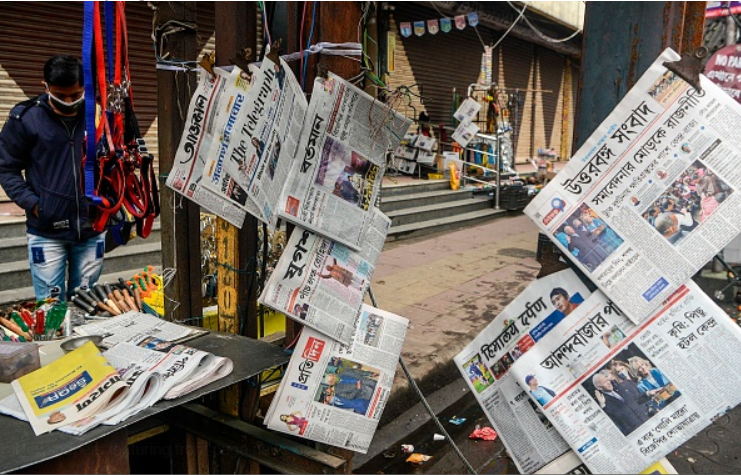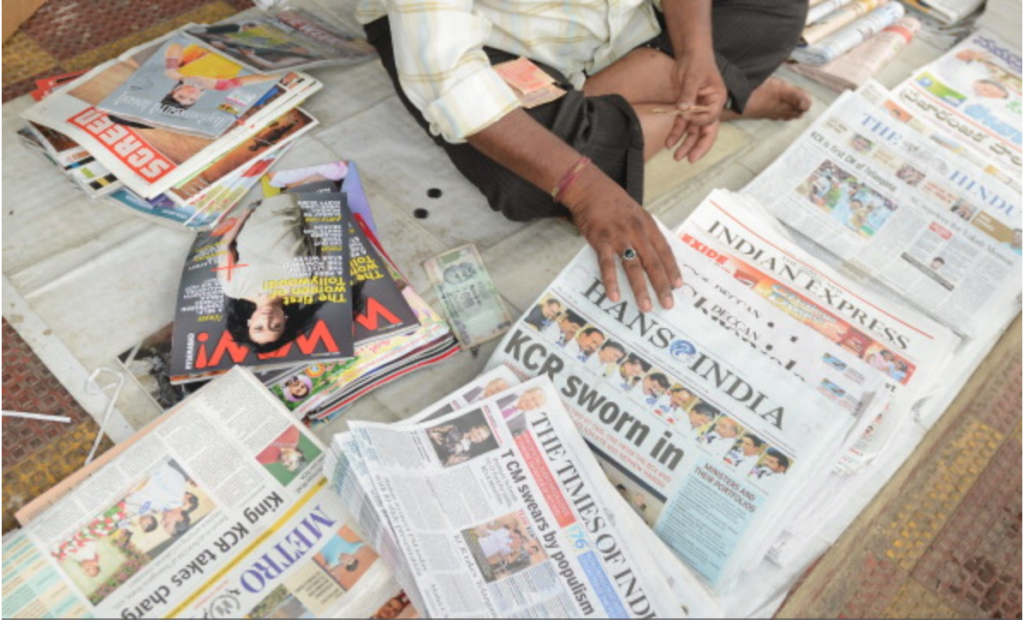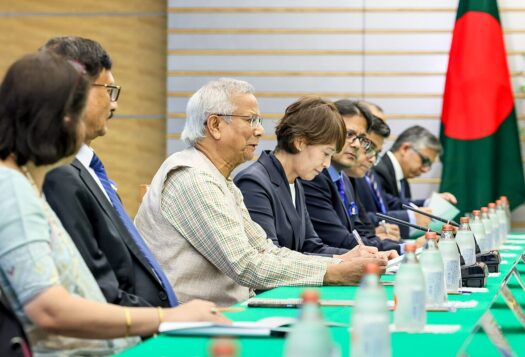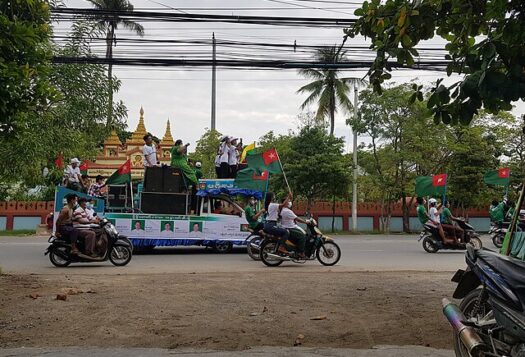
As the COVID-19 pandemic rages out of control in India, many are rightly focusing on the content of stories on the death toll and months of lockdown. The lack of journalistic integrity behind some of the stories deepens this grim situation. In April, reports emerged that, at the request of the Indian government, Twitter censored 52 tweets criticizing the government’s handling of the pandemic. Meanwhile, pro-government TV channels blamed the farmers’ protests for limited oxygen supplies for COVID-19 patients, though supplies were actually scarce due to poor public health infrastructure. This reporting is not only misleading and traumatic to those affected by the pandemic, but also poses a major threat to India’s vibrant democracy.
Even before the pandemic, media bias in India existed across the largest newspapers throughout the country, and political forces shape this bias. For example, funds from the government are critical to many newspapers’ operations and budgets, and the current Bhartiya Janata Party (BJP) government has previously refused to advertise with newspapers that do not support its initiatives. This pressure leads media to endorse government policies, creating unbalanced reporting where media bias can affect political behavior in favor of the incumbent. Many media outlets enjoy a symbiotic relationship with the government, in turn receiving attention, funding, and prominence. These trends damage India’s democracy and also put journalists critical of the government in danger, threatening their right to physical safety.
Funds from the government are critical to many newspapers’ operations and budgets, and the current Bhartiya Janata Party (BJP) government has previously refused to advertise with newspapers that do not support its initiatives.
Media Bias in India
While the COVID-19 pandemic has exacerbated media bias in India, it is hardly a new phenomenon. A study of 30 Indian newspapers and 41 Indian TV channels with the largest viewership rates in the country confirms the existence of rampant media bias during a two-year period from 2017 to 2018.1
The study relies on rating editorial articles that focus on religious, gender, and caste issues as either liberal, neutral, or conservative; and then compiling these scores by each newspaper to find the overall bias in each outlet. The results unsurprisingly and unfortunately show the consistent existence of media bias—for example, except for eight newspapers, the papers all express biases far from neutral. And this bias consistently correlates with viewers in India expressing similarly biased social, economic, and security attitudes.
What this suggests is either that biases in the media shape viewer attitudes or Indians are viewing outlets that align with their pre-existing views. Meanwhile, political parties capitalize on this bias to influence public attitudes and further their own power. The BJP spends almost USD $140 million on publicity per year, with 43 percent of this expenditure focusing specifically on print ads in newspapers. Government advertisements serve as a financial lever for influencing media content and public opinion. For example, during the year leading to the 2019 elections, newspapers that received more advertisement revenue from the BJP were likelier to espouse more conservative ideology and to have more conservative readers.

Bias versus Democracy
This ability of media bias to influence political support in India can contribute significantly to democratic backsliding by harming journalists, preventing freedom of expression and government accountability, and influencing voters. Media bias in itself causes democratic backsliding because the media neither holding the government accountable nor informing the public about policies that strengthen the incumbent’s power can increase authoritarian practices.
In addition, government efforts to constrain the media harms journalists, undemocratically violating citizens’ rights and physical safety. Freedom House rates India as only two on a four-point scale for whether there is a “free and independent media,” because of “attacks on press freedom…under the Modi government.” In fact, the government imprisoned several journalists in 2020 who reported critically on Prime Minister (PM) Narendra Modi’s response to the pandemic. The crackdown on journalists engendered an unsafe environment for free reporting, a feature of many authoritarian states.
A biased media also prevents citizens from receiving information that might be essential to public wellbeing by filtering information through a lens that supports government interests first. When the BJP cracked down on coverage of COVID-19 last year, journalists were unable to disseminate critical information to Indians. This included where migrants suffering from the sudden lockdown could receive necessities—information that could save lives. Notably, these crackdowns also meant an absence of reporting criticizing the government’s response to the pandemic. In a democratic society, a critical press is essential for holding the government accountable for its actions and motivating it to change its practices.
Media bias plays an influencing role at the voting booth as propaganda can skew voter decisions and perceptions of what is true.
Finally, media bias plays an influencing role at the voting booth as propaganda can skew voter decisions and perceptions of what is true. During India’s 2014 general elections, the BJP advertised more than the Congress Party and voters exposed to more media were likelier to vote for the BJP. To influence voters, media bias often utilizes inflammatory messaging to convince more people to vote, selective information to bias what voters believe about the efficacy of the candidates, and appeasement to convince voters that they will personally benefit from voting a certain way. For example, a TimesNow interview of PM Modi before the 2019 elections made it seem that Modi’s economic policies—widely criticized as ineffectual—were successful.
From Media Bias to Media Neutrality
Although government measures are exacerbating media bias, the media retains some agency and could work to limit the influence of politics on reporting. Currently, 36 percent of daily newspapers earn over half of their total income from the government of India and most major TV stations have owners who served as politicians themselves or who had family members in politics. Although it would be difficult to convince larger outlets to participate since they benefit from their government backing, smaller independent outlets can start this movement towards neutrality. Many small outlets already eschew government funding and report with less biased views. These publications in India therefore deserve more attention and more support to reduce media bias.
While India has some of the highest circulation of newspapers in the world, it also unfortunately has high media bias rates and one of the lowest press freedom rankings for democracies. This media bias can contribute to democratic backsliding and must be addressed by media outlets. Only then can media in India properly do its job—serving to inform, not influence the public.
The author would like to acknowledge Dr. Pradeep Chhibber, Pranav Gupta, and UC Berkeley for supporting her research measuring media bias in India. All perspectives in this article are her own.
***
Image 1: DIPTENDU DUTTA/AFP via Getty Images
Image 2: Noah Seelam/AFP via Getty Images


